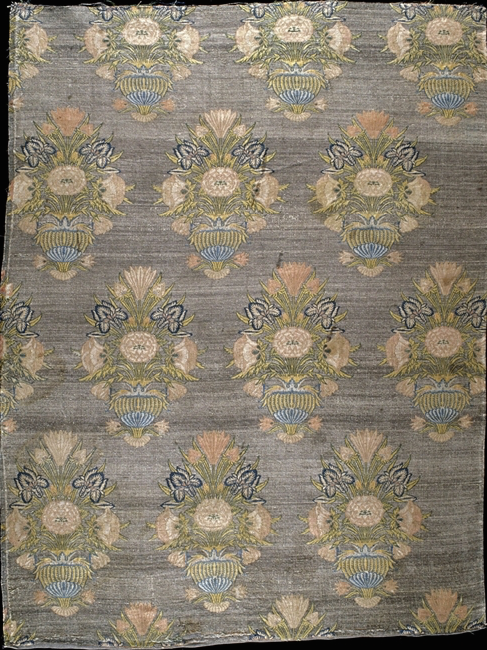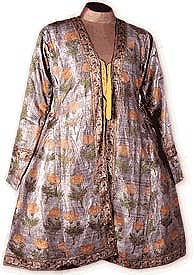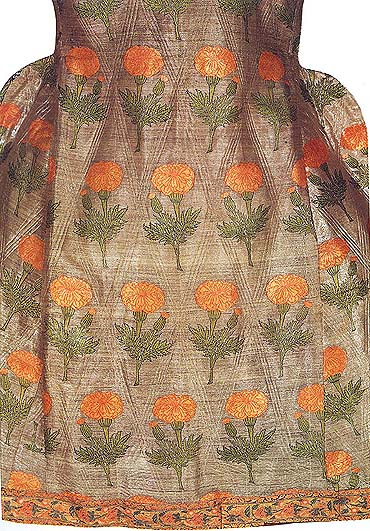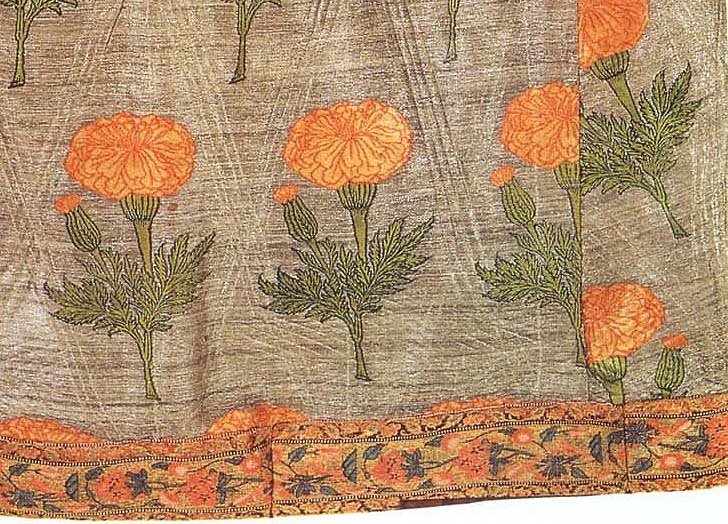Rich Colors | |
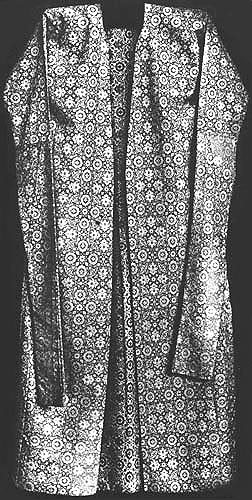 |
Actual 16th century garment
This garment, from the late 16th century, is in lampas weave of red silk with silver metallic threads, with the pattern repeating every 4.75". While frustratingly in black and white, it is useful because the inside is visible, and the pattern shows in opposite colors. It dates to the end of the 16th century - Pope said 1600, the last year of the 16th C., and he thought it was probably manufactured in Yazd, a city known for its production of luxury fabrics. I counted 10-1/2 repeats from shoulder to hem. This makes this garment approximately 49-7/8" (4 feet and 4-5/32") long. I'm 5'1" and i make my garments about 50 inches long, so this probably belonged to someone about my height. I have never seen a color photograph and do not know if this garment has been lost. It was in the Museum of Oriental Treasures in Moscow at the time Pope wrote his book, in the 1930s, before WWII. Note the small and highly regular pattern.
SOURCE |
 |  |
| undated, probably 17th or 18th c. | |
 | 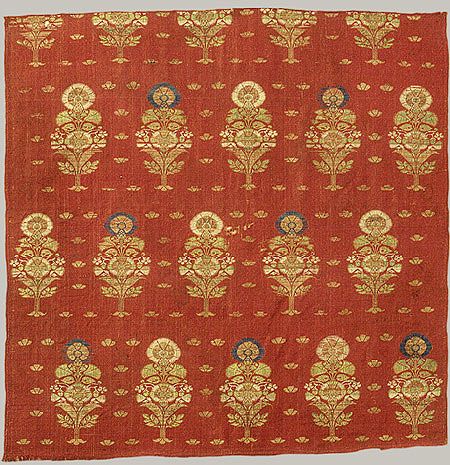 17th c silk brocade - red ground with green, blue, white, tan, and pink flowers |
Medium ColorsAgain, remember that these colors have faded over the past 400 years or so, and what looks "pink" was actually a rich salmon. |
|
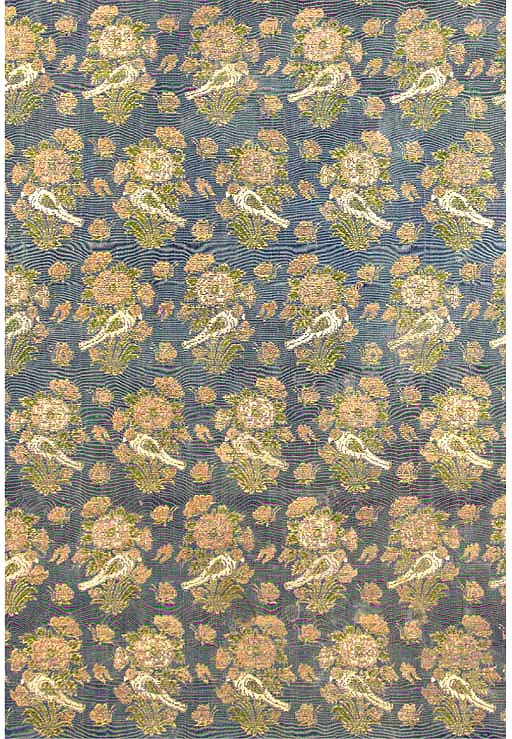 |
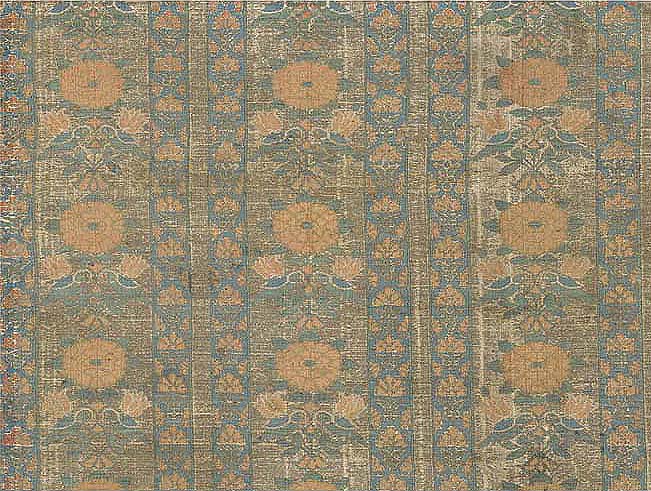 |
 |
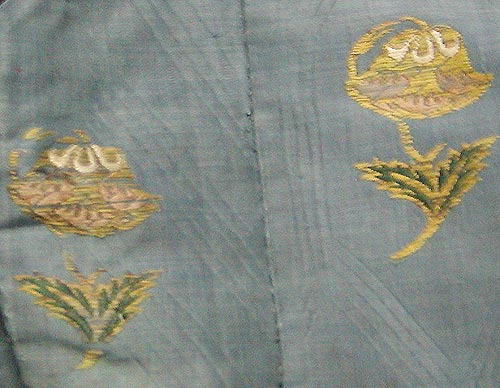 Textile Museum, Washington DC, accession #TM1985.5.1 Photo by Roxane Farabi |
Lighter Colors | |
Front View: in the Textile Museum in Lyon France ----- Back View and Detail: from "The Book of Silk" by Philippa Scott “An elegant 17th-century Persian coat with a diamond lozenge-shaped pattern impressed in the silver ground. Each lozenge is decorated with a marigold flower and bud, brocaded in coloured silk.” (Philippa Scott) | |
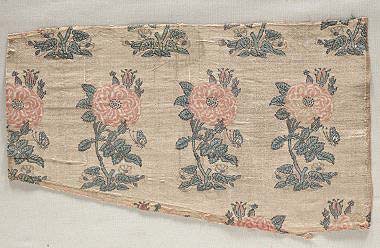 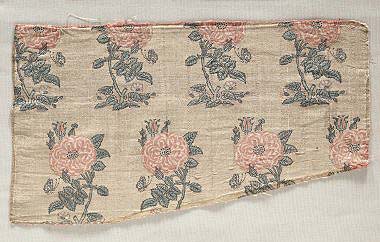 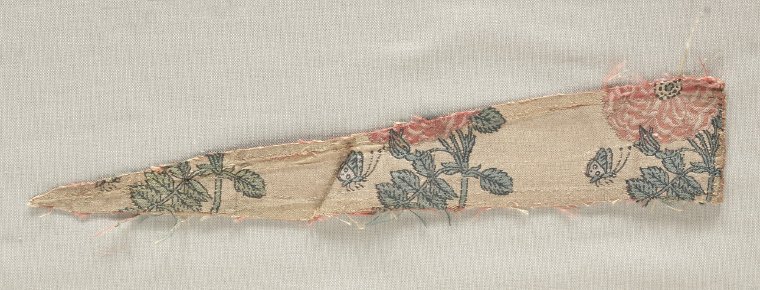 3 fragments from the same silk brocade fabric Shah Abbas period early 17th c brocade Cleveland Museum of Art, accession #1924.744 | 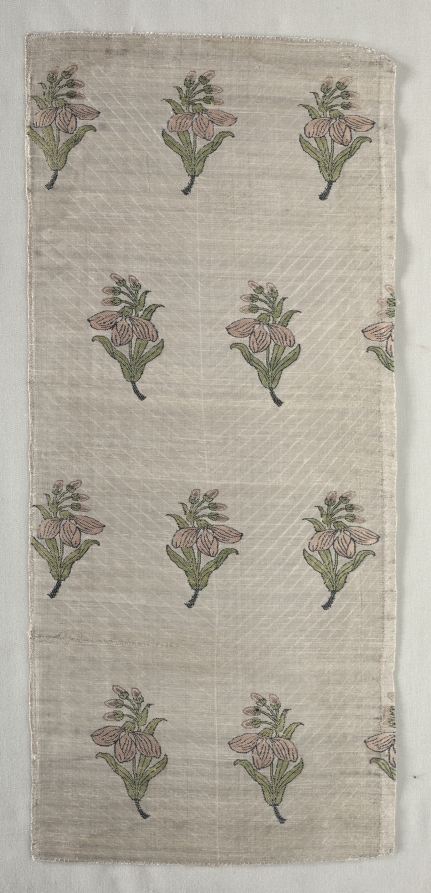 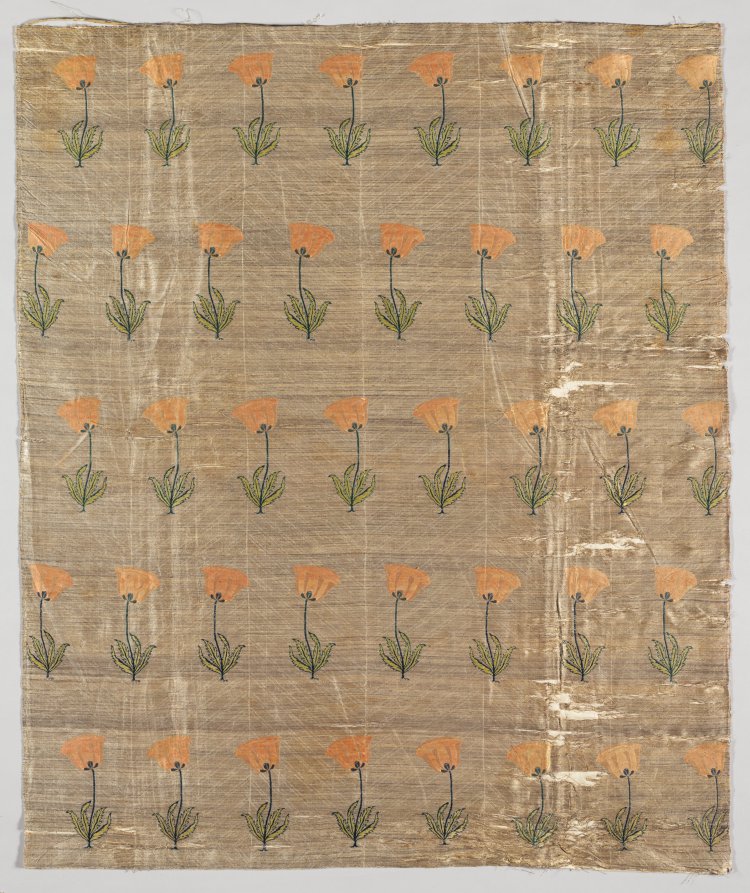 Two 17th c. silk and metallic brocades from the CMA Left: #1926.19; Right: #1926.22 |
 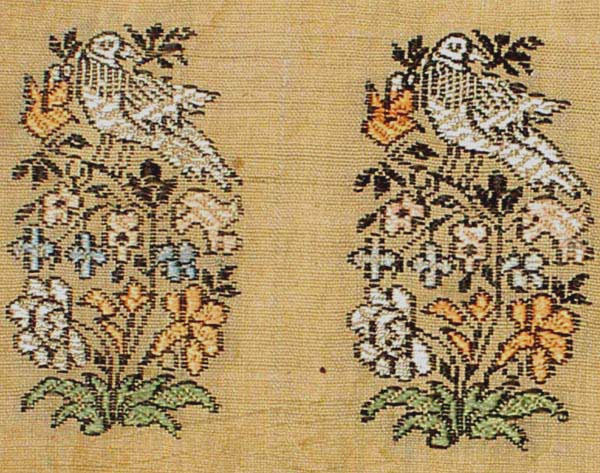 Undated, probably 17th c. 16" long X 12" wide |
 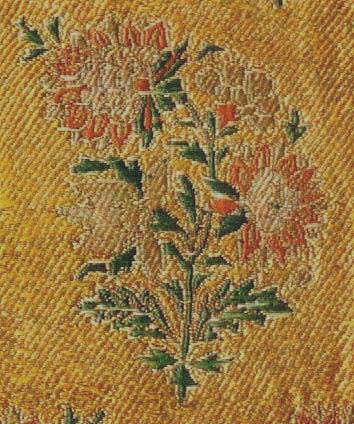 Undated, probably late 17th or early 18th c. 15" long X 5" wide |
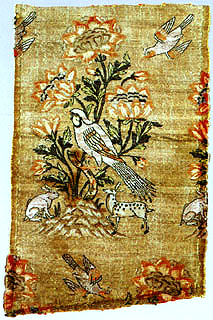 17th c. silk and silver gilt metallic brocade fragment, Ashmolean | 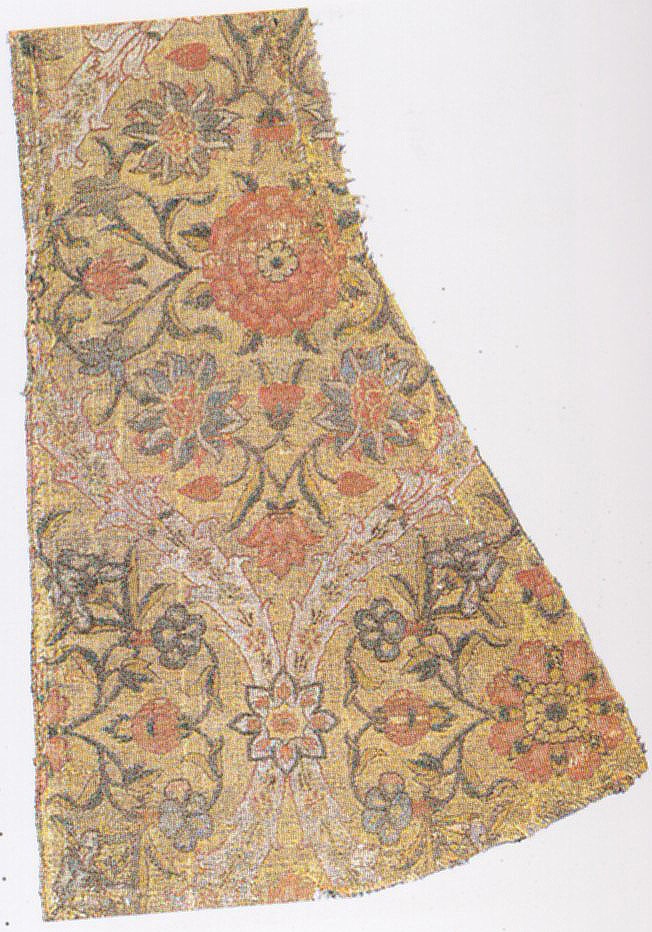 |
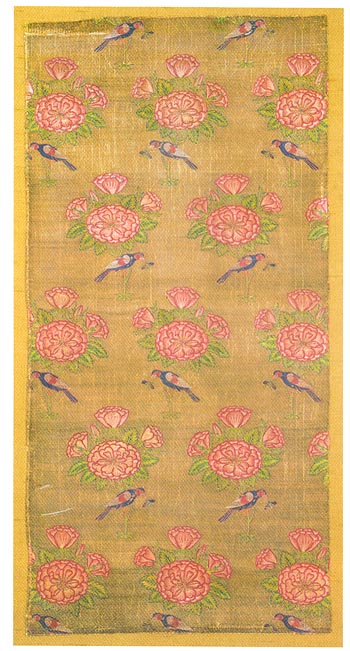 Undated, probably late 17th or early 18th c. |
  Flowers in ogees sewn together fragments, 7" wide x 23" long Undated, probably 17th c. |
 | |
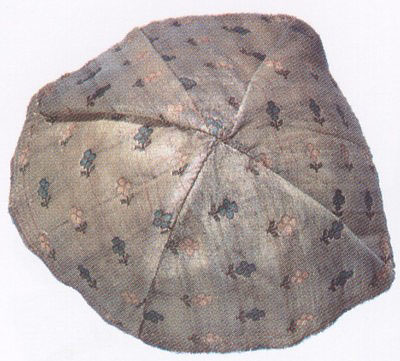 silk brocade skullcap, 17th century, possibly a man's | 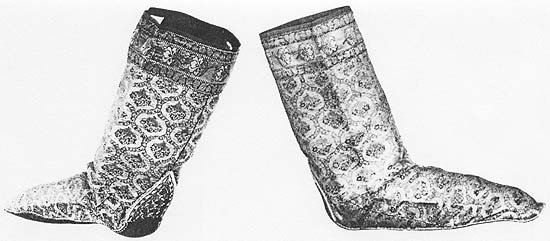 silk brocade fabric 'boots' with leather soles, variously dated in sources, from 17th to the 19th c. 17th c. in J. Scarce, Women’s costume of the Near and Middle East, 1996.  in the Victoria & Albert Museum, no. 962-1889 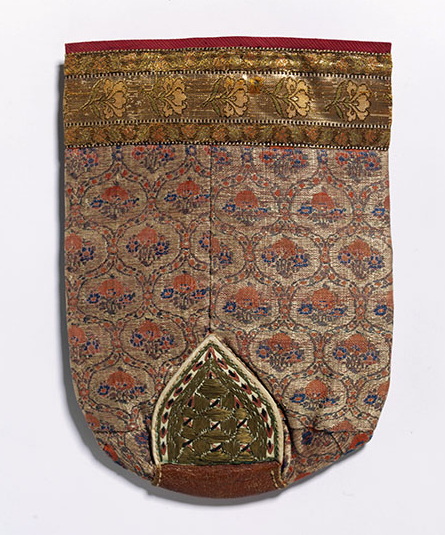 Rear view of heel |
|
Safavid Figurative Fabrics: with humans and animals Questions? Comments? Suggestions?
You can write to me here. |
